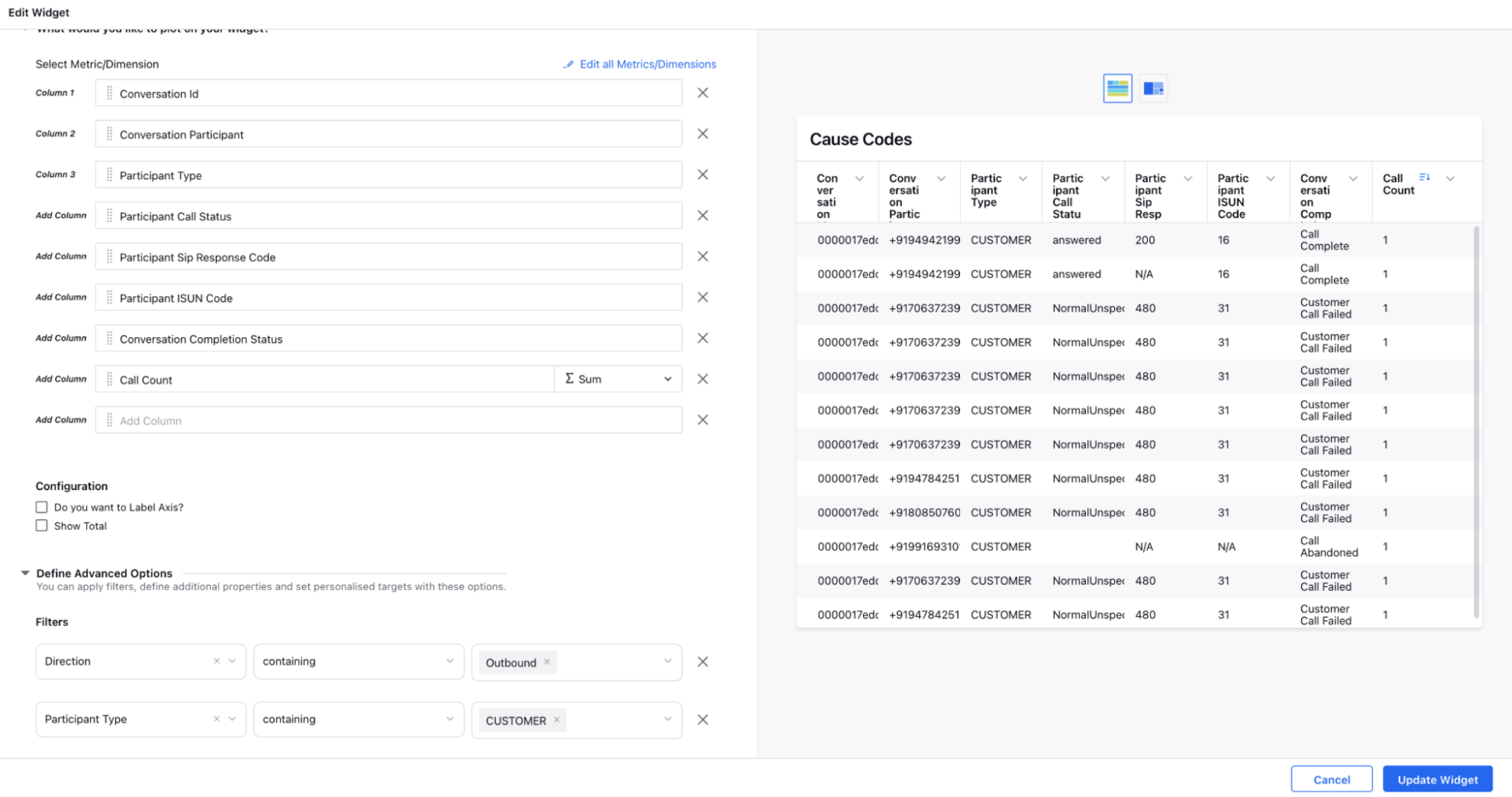Outbound Cause Codes
Updated
Target personas
Campaign Manager, Admin, Supervisor
Overview of outbound cause codes
Whenever an outbound call is made from Sprinklr, the WebRTC will connect to Ozonetel/Twilio/SignalWire/Exotel, which then passes the request to Telco, which then makes the call. Based on the call, Telco passes two codes, SIP and ISUP. The combination of these two codes tells us the outcome of the call.
Example: SIP code: 480 and ISUP code: 31 combination means “Customer Call Failed”
These codes are generated by Telco and passed to Ozonetel/Twilio/SignalWire/Exotel; they do not make any changes to the codes and pass them to Sprinklr to be shown as part of reporting.
The Session Initiation Protocol (SIP) is a signaling protocol used for controlling communication sessions such as Voice over IP(VoIP) telephone calls. SIP is based on request/response transactions in a similar manner to the Hypertext Transfer Protocol (HTTP). Each transaction consists of a SIP request (which will be one of several request methods) and at least one response.
The ISDN (Integrated Services Digital Network) User Part or ISUP is used to set up telephone calls in the public switched telephone network (PSTN). When a telephone call is set up from one subscriber to another, several telephone exchanges could be involved, possibly across international boundaries. To allow a call to be set up correctly, where ISUP is supported, a switch will signal call-related information, like the called party number, to the next switch in the network using ISUP messages.

Cause codes as part of Sprinklr reporting

Sprinklr has the ability to show these cause codes as part of Sprinklr reporting as shown above. The codes are accurate and are mapped to the conversation completion status it corresponds to. Below are the table configurations to expose the cause codes.

We only support outbound cause codes currently as the inbound codes are not passed to Sprinklr. The cause codes might show “N/A” in certain cases due to codes not being passed from Telco.